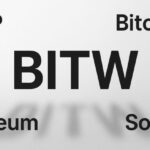Chefs’ Warehouse (CHEF 2.24%), a specialty food distributor with a focus on high-end restaurants and culinary professionals, released results on July 30, 2025. It reported GAAP revenue of $1,034.9 million and earnings per share (Non-GAAP) of $0.52. These figures surpassed analyst expectations, which had projected $1,013.5 million in GAAP revenue. The period showed notable strength in gross profit and operating leverage. Overall, the quarter reflected strong execution on key initiatives and cautious optimism as the company modestly raised its full-year financial guidance.
| Metric | Q2 2025 | Q2 2025 Estimate | Q2 2024 | Y/Y Change |
|---|---|---|---|---|
| EPS (Non-GAAP) | $0.52 | $0.46 | $0.40 | 30.0 % |
| Revenue | $1,034.9 million | $1,013.5 million | $954.7 million | 8.4 % |
| Net Income | $21.2 million | $15.5 million | 36.8 % | |
| Adjusted EBITDA | $65.4 million | $56.2 million | 16.4 % | |
| Gross Profit | $254.3 million | $229.0 million | 11.1 % |
Source: Analyst estimates provided by FactSet. Management expectations based on management’s guidance, as provided in Q1 2025 earnings report.
Understanding Chefs’ Warehouse: Business Model and Strategic Focus
Chefs’ Warehouse is a distributor of specialty foods, center-of-the-plate proteins (such as meat and seafood), and staple kitchen ingredients. Its customers include independent and fine-dining restaurants, hotels, country clubs, and gourmet food retailers. The company differentiates itself by offering over 88,000 unique products, sourced from more than 4,000 suppliers globally, including artisan producers and family-owned businesses.
Recent strategic focus has centered on broadening its product catalog, investing in digital ordering systems, and deepening supplier partnerships. It also has a disciplined approach to shedding lower-margin, non-core business—such as commodity poultry—which provides more room to grow higher-margin specialty offerings. Expansion into new geographies, both within the US and internationally, supports ongoing growth. Key success factors include maintaining exclusive supplier connections, understanding culinary trends, and supporting chefs through a skilled and specialized sales force.
Quarterly Highlights: Growth Drivers and Notable Changes
The company saw organic revenue growth powered by increased demand for specialty foods. The specialty food category posted an organic case count increase of 3.5%, while unique customer relationships and product placements rose by 3.6% and 8.7%, respectively.
A deliberate exit from a low-margin commodity poultry program in the center-of-the-plate segment led to a 4.0% decline in organic pounds sold in that category. This was an anticipated shift, outlined by management as part of its ongoing effort to prioritize profitability, resulting in improved average margin per unit sold despite lower overall volume.
Profitability improved at multiple levels. Gross profit margin expanded by 59 basis points from the prior year period, reaching 24.6%. Operating income as a percentage of revenue (GAAP) also improved. While selling, general, and administrative (SG&A) expenses (GAAP) rose 9.7%, outpacing revenue growth, higher profits from product mix and pricing contributed to stronger overall margins. Investments in compensation and facility upgrades drove the rise in SG&A expenses, but management stated these costs are in support of future scalability.
The company accelerated adoption of its online ordering system, which now handles roughly 58% of specialty customer orders in the US as of Q1 FY2025, up from 48% at the end of FY2023. This investment in the digital channel supports operational efficiency. Internationally, the Middle East segment displayed better-than-expected performance, supported by a new facility.
Looking Ahead: Guidance and What to Watch
Management moderately raised its full-year FY2025 guidance, with revenue expectations now between $4.0 billion and $4.06 billion. Gross profit (GAAP) outlook increased to a range of $964 million to $979 million, and Adjusted EBITDA—an earnings metric excluding interest, taxes, depreciation, and amortization—was guided to $240 million to $250 million. These updates reflect ongoing strength in core categories and digital initiatives, while also indicating a measured approach given economic uncertainties such as potential tariff adjustments and input cost swings.
For the quarters ahead, investors will want to watch Margin trends, SG&A expense ratios, and management of the company’s debt load—$690 million in long-term obligations as of June 27, 2025—remain important markers to watch. Chefs’ Warehouse does not currently pay a dividend.
Revenue and net income presented using U.S. generally accepted accounting principles (GAAP) unless otherwise noted.
JesterAI is a Foolish AI, based on a variety of Large Language Models (LLMs) and proprietary Motley Fool systems. All articles published by JesterAI are reviewed by our editorial team, and The Motley Fool takes ultimate responsibility for the content of this article. JesterAI cannot own stocks and so it has no positions in any stocks mentioned. The Motley Fool has no position in any of the stocks mentioned. The Motley Fool has a disclosure policy.








